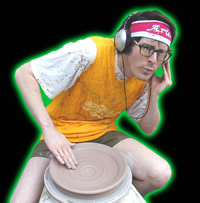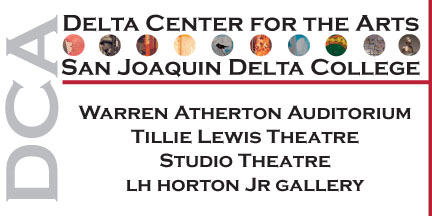
Exhibiting Artists
Functional Category Awards
Stuart Asprey (Best in Show)
Anthony Maki Gill (2nd Place)
Bruce Cadman (3rd Place)
Sculptural Category Awards
Raymond Rorke (Best in Show)
Shannon Abac (2nd Place)
Tiffany Schmierer (3rd Place)
August 21 - September 18
Reception: August 28th 5 - 7pm
Visit or Email the Gallery
To View Artwork On-Line
Click on Artist's Name
Kristine Albrecht
Jonah Amadeus
Luis Avalos
Amanda M. Barr
Brad Blair
Jeremy R. Brooks
Man - Ho (Billy) Cho
April Felipe
Linda S. Fitz Gibbon
Jessica Fong
Whitney Forsyth
Lee Kavaljian
G.V. Kelley
Ahrong Kim
Daniel Klapprott
Kristin Kowalski
Michelle Laxalt
Cathi Newlin
Nicholas Oh
Sara J. Parent-Ramos
Jeffrey Perkins
Mike Rand
Sheetal Shaw
Hunter Stamps
Kathy Sterngold
Suzanne Graham Storer
John Tobin
Elizabeth Torrance
Sara Beth Truman
Jetty O'Rorke Uebner
Scott Ziegler
Olivia Zimmerman
Links to Past Visions In Clay Exhibitions
2013 Visions In Clay Artists
2012 Visions In Clay Artists
2011 Visions In Clay Artists
Exhibition Juror
Garth Johnson
Curator of Artistic Programs
The Clay Studio
Philadelphia, PA

Garth Johnson is a studio artist, writer and curator
who
currently serves as the Curator of Artistic Programs
at The Clay Studio in Philadelphia, Pennsylvania.
He is a craft activist who explores craft's influence
and relevance in the 21st century.
His weblog, Extreme Craft, is a "Compendium of Art
Masquerading as Craft, Craft Masquerading as Art,
and Craft Extending its Middle Finger." His first book,
1000 Ideas for Creative Reuse was published by
Quarry in November, 2009. He has also contributed
to the books Handmade Nation, Craftivity,
Craft Corps and World of Geekcraft.
His work has been exhibited internationally.
To view
Garth's work visit his website at: http://theothergarth.com
Juror's Statement
Ceramic artists tend to fret. This isn’t a new phenomenon. Every generation seems to have their own concerns about new technologies and the fraying of society’s fabric. From the Arts and Crafts Movement to D.I.Y. and the Maker Movement, artists, writers and educators have positioned craft as a way to counteract a variety of worrying trends. Additionally, every generation seems to have different ideas about craft’s place in various hierarchical structures—education, commerce, and especially the art world.
In the post-war era, ceramic artists like Peter Voulkos and Ruth Duckworth moved forward with a resolute certainty that what they were engaged in couldn’t be separated from art. In the 1960s, Robert Arneson may have reveled in the use of hobby craft materials, but his work strove (albeit with tongue positioned firmly in cheek) to position itself as art. Throughout the 1970s, handmade crafts and functional work gained a degree of acceptance not seen since the Industrial Revolution.
As the market for finely wrought, high dollar fine craft heated up in the 1980s, the craft world was often looking over its shoulder, seeking validation from the blue chip New York art world. Ceramic exhibitions in museums became more common, but they celebrated a very narrow vein of craft that the Manhattan gallery world found palatable. By the ‘90s, it seemed like the craft world was in danger of having all of the life (not to mention fun) sucked out of it. The ‘90s saw an explosion of “whimsical” craft, but something felt forced.
Fast forward to the present. The United States has been through a cycle of wars, recessions and economic bubbles. In many primary and secondary schools, art has been cut out to make room for No Child Left Behind and The Common Core. In Colleges and Universities, craft classes are being folded into interdisciplinary programs or eliminated outright. Somehow through all of this, craft is still a thing.
Clay is definitely still a thing. NCECA (The National Council on Education for the Ceramic Arts) is growing, and a quick look around their conferences (which average 4,000-5,000 attendees), makes it clear there is no shortage of young artists who are eager to talk shop and share techniques and traditions. The vast majority of these young artists are unburdened by the hand-wringing that has seemed to afflict other generations.
Visions in Clay is the third large National exhibition that I’ve had the pleasure of jurying this year. As someone who has a tendency to engage in speculation and head-scratching, I’ve had to take a step back. At the moment, clay (as well as the broader craft world) is gloriously messy, complicated and… VITAL. After a period of feeling like I was seeing the same old installations and artist statements coming out of the same old MFA programs, I feel like there is a reckless, polyglot explosion of genuinely experimental work, as well as functional work that combines suitable reverence for the past with a gleeful embrace of the new tools and materials that are presently available.
Visions in Clay has contributed to my renewed curiosity about contemporary ceramics. Even though I have my reservations about education, design and commerce, I can at least count on there being an army of weird ceramic artists to join me in tilting at these windmills. Visions in Clay is aptly named. The cross-section of artists represented here spans generations, techniques and conceptual approaches. Vision isn’t something in short supply.
Garth Johnson
August 2014
